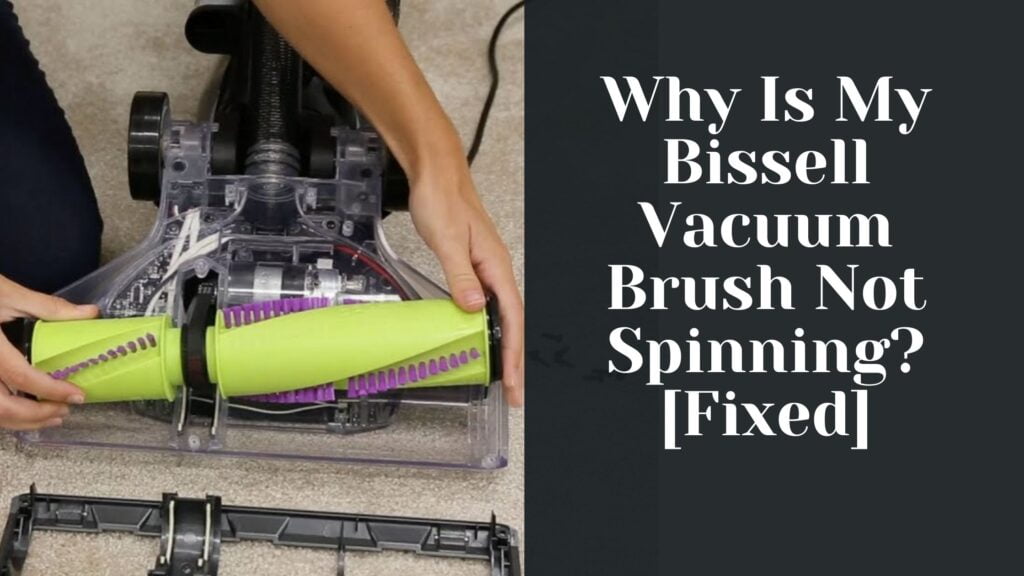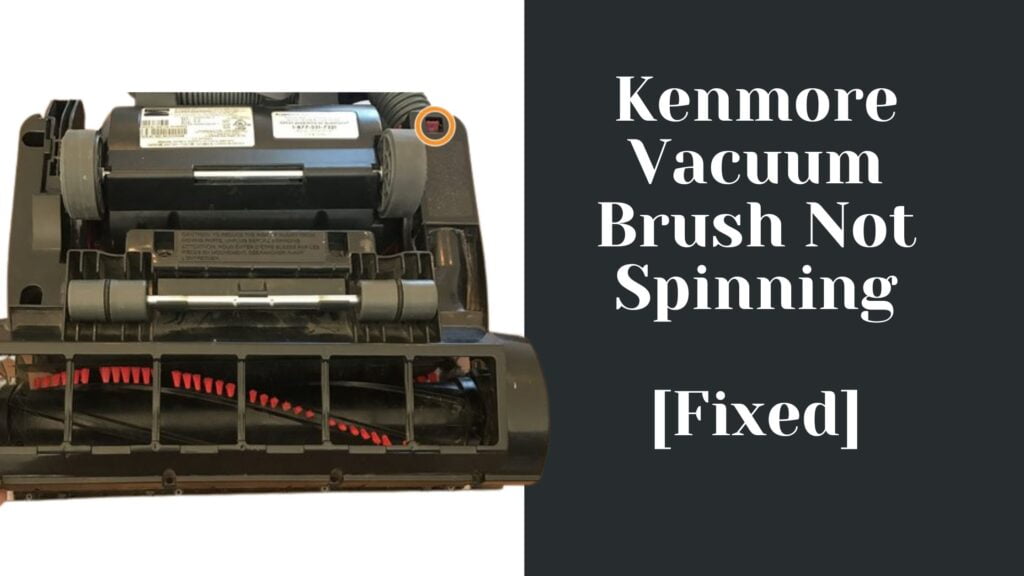Miele vacuum cleaners are known for their high-quality performance and durability. However, like any other appliance, they can experience issues over time. One of the most common problems users face is a loss of suction, which can make cleaning a frustrating experience.
If your Miele vacuum cleaner is not suctioning properly, there are several potential causes. A full dust bag, cylinder, or filter can result in a loss of suction. Additionally, a clogged hose or brush roll can also be to blame. By understanding the common causes of lost suction and how to troubleshoot them, you can get your Miele vacuum cleaner back to its optimal performance.
In this article, we will explore the various reasons why your Miele vacuum cleaner may not be suctioning properly. We will provide simple, easy-to-follow steps to help you troubleshoot the issue and get your vacuum cleaner back on track. Whether you are a seasoned Miele user or a first-time owner, this guide will help you keep your appliance running smoothly and efficiently.
Understanding Your Miele Vacuum
Miele vacuums are high-quality products that are designed and manufactured in Germany. They are known for their durability, efficiency, and powerful suction. Understanding how your Miele vacuum works is essential to ensure that it operates at its best and provides you with the best cleaning experience possible.
Types of Miele Vacuums
Miele offers a wide range of vacuum cleaners, including canister vacuums, upright vacuums, stick vacuums, and robot vacuums. Each type of vacuum has its unique features and benefits, and choosing the right one for your needs is essential.
Canister vacuums are versatile and powerful and are suitable for cleaning carpets, hard floors, and upholstery. Upright vacuums are ideal for cleaning large areas and come with a powerful motor and a large dustbin. Stick vacuums are lightweight and easy to maneuver, making them perfect for quick cleanups. Robot vacuums are fully automated and can clean your floors even when you’re not at home.
Features of Miele Vacuums
Miele vacuums come with several features that make them stand out from other vacuum cleaners. Some of these features include:
- Powerful suction: Miele vacuums are known for their powerful suction, which can remove even the most stubborn dirt and debris from your floors.
- HEPA filters: Miele vacuums come with HEPA filters that trap allergens and other harmful particles, making them suitable for people with allergies or asthma.
- Quiet operation: Miele vacuums operate quietly, making them ideal for use in homes with children or pets.
- Durable construction: Miele vacuums are built to last and are made with high-quality materials that can withstand years of use.
Maintaining Your Miele Vacuum
To ensure that your Miele vacuum operates at its best, it’s essential to perform regular maintenance. Some tips for maintaining your Miele vacuum include:
- Emptying the dustbin regularly: Empty the dustbin after every use to prevent it from becoming clogged.
- Cleaning the filters: Clean the filters regularly to ensure that they are working correctly.
- Checking the brush roll: Check the brush roll regularly to ensure that it’s not clogged with hair or debris.
- Replacing parts when necessary: Replace worn-out parts, such as the dustbin or filters, when they become damaged or worn.
In conclusion, understanding your Miele vacuum is essential to ensure that it operates at its best and provides you with the best cleaning experience possible. With its powerful suction, durable construction, and advanced features, a Miele vacuum is an excellent investment for any home.
Common Problems and Causes
Miele vacuums are known for their powerful suction, but sometimes you may encounter issues with suction loss. Here are some common problems and causes that may be affecting your Miele vacuum:
- Clogged Filters: One of the most common reasons for suction loss is that the filters have become clogged with dirt and debris. It is essential to clean or replace the filters regularly to maintain proper suction power.
- Blockages in the Hose: Blockages in the hose can also cause suction loss. A group of items like paper and animal fur may cluster together and block the hole. Stretch out the hose and shine a flashlight into one end to check for blockages.
- Leaking Airflow: A leak of suction somewhere, such as a hole or gap, can cause low suction. Check that all accessories, hose, tube, and brush are fully installed to prevent airflow leaks.
- Obstructed Brush Roll: Long fibers trapped in the powerhead could prevent the brush roll from rotating, causing a lack of suction. Clean the brush roll regularly to avoid obstructions.
By identifying the cause of suction loss, you can take steps to fix the problem and restore your Miele vacuum’s suction power. Regular cleaning and maintenance can prevent these common issues and keep your vacuum functioning at its best.
Components and Their Function
To understand why a Miele vacuum may not be suctioning effectively, it’s important to know the various components and their functions. Here’s a breakdown of the key components and their roles:
Vacuum Head
The vacuum head is the part of the vacuum that comes into contact with the floor or carpet. It houses the roller brush, which sweeps up dirt and debris, and the suction port, which draws in the dirt and debris.
Hose
The hose connects the vacuum head to the main body of the vacuum. It’s typically flexible and allows for easy maneuverability.
Filters
Filters are crucial in maintaining proper suction in a Miele vacuum. They trap particles as air flows through the vacuum. Clogged filters can lead to a loss of suction.
Bag
The vacuum bag collects dirt and debris, preventing it from being released back into the air. When the bag is full, it can impede suction.
Brush Roll
The brush roll is responsible for agitating the carpet fibers and dislodging dirt and debris. A malfunctioning brush roll can lead to poor suction.
Motor
The motor powers the vacuum and drives the suction. A malfunctioning motor can cause a loss of suction or even render the vacuum inoperable.
Tube
The tube connects the motor to the vacuum head and is responsible for transporting the air and dirt.
Seal
The seal is a rubber gasket that ensures a tight fit between the vacuum head and the tube, preventing air leaks and maintaining suction.
Power Cord
The power cord connects the vacuum to the power supply and provides electricity to power the motor.
By understanding the function of each component, you can better diagnose and troubleshoot any issues with your Miele vacuum’s suction.
Troubleshooting Your Miele Vacuum
If your Miele vacuum has lost suction, there are a few things you can do to troubleshoot the issue before calling a technician. Here are some common problems and solutions:
Blockages
One of the most common reasons for a lack of suction in a Miele vacuum is a blockage in the hose or wand. Check for blockages by disconnecting the wand from the hose and inspecting both for any obstructions. If there is a blockage, remove it carefully.
Dirty Filters
Another common cause of reduced suction is dirty filters. Miele vacuums have several filters that need to be cleaned or replaced regularly. Check the user manual for instructions on how to clean or replace the filters.
Overheating
If your Miele vacuum is overheating, it may shut off automatically to prevent damage. This can be caused by a clogged hose or filter, or by using the vacuum for too long without taking a break. If your vacuum has shut off due to overheating, let it cool down for at least 30 minutes before trying to use it again.
Damaged Parts
If your Miele vacuum is still not suctioning properly after checking for blockages and cleaning the filters, there may be a damaged part that needs to be replaced. Check the user manual for troubleshooting tips or contact a technician for assistance.
Reset Button
Some models of Miele vacuums have a reset button that can be used to troubleshoot issues with the vacuum. If your vacuum is not working properly, try pressing the reset button to see if that resolves the issue.
By following these troubleshooting tips, you may be able to fix the issue with your Miele vacuum without needing to call a technician. However, if the problem persists, it is always best to seek professional assistance to avoid causing further damage to your vacuum.
Maintenance and Care
To ensure your Miele vacuum cleaner continues to work efficiently, it’s important to perform regular maintenance and care. Here are some tips to keep your vacuum in top shape:
- Clean the filters: Over time, the filters in your vacuum can become clogged with dirt and dust. This can cause the suction to decrease, making it harder to clean your floors. To prevent this, clean the filters regularly. You can wash them with warm water and let them dry completely before putting them back in the vacuum.
- Empty the dustbin: When the dustbin is full, it can reduce the suction power of your vacuum. Make sure to empty the dustbin after every use, especially if you have pets or if you’re vacuuming a lot of dirt and debris.
- Check the brush roll: The brush roll is the part of the vacuum that helps to pick up dirt and debris from carpets and floors. If it becomes tangled with hair or other debris, it can reduce the suction power of your vacuum. Make sure to check the brush roll regularly and remove any hair or debris that may be tangled around it.
- Inspect the hose: The hose is another part of the vacuum that can become clogged with dirt and debris. Check the hose regularly and use a long, thin object like a coat hanger to remove any blockages.
- Store your vacuum properly: When you’re not using your vacuum, make sure to store it in a dry, cool place. This will help to prevent any damage to the battery or charging dock.
- Follow the manufacturer’s instructions: Always follow the manufacturer’s instructions for maintenance and care. This will help to ensure that your vacuum continues to work efficiently and that you don’t void the warranty.
By following these simple tips, you can help to keep your Miele vacuum cleaner working efficiently for years to come.
Frequently Asked Questions
How do I troubleshoot suction problems with my Miele vacuum?
If you’re experiencing suction problems with your Miele vacuum, there are a few things you can do to troubleshoot the issue. First, check that the bag or dustbin is not full and that the filter is clean. If the bag or filter is full, empty it or replace it with a new one. Next, check for any blockages in the hose or brush head. If you find any blockages, remove them and try the vacuum again. If these steps don’t solve the problem, it may be time to contact a professional.
What are some common reasons why a Miele vacuum might not have suction?
There are several reasons why a Miele vacuum might not have suction. One common reason is a full bag or dustbin. Another reason could be a clogged filter or hose. Additionally, a damaged or worn out brush head could cause suction problems. Finally, a faulty motor or powerhead could also be the culprit.
How can I fix my Miele vacuum if it’s not picking up debris?
If your Miele vacuum is not picking up debris, the first thing to check is the brush head. Make sure it’s clean and free of any blockages. If the brush head is clean and the vacuum is still not picking up debris, check the suction power. If the suction is weak, try cleaning or replacing the filter. If the suction is strong but the vacuum is still not picking up debris, it could be a problem with the brush head or motor.
What steps should I take if my Miele vacuum isn’t going into the bag?
If your Miele vacuum isn’t going into the bag, the first thing to check is the bag itself. Make sure it’s installed correctly and that it’s not full. If the bag is installed correctly and not full, check the hose and brush head for blockages. If you still can’t figure out the problem, it may be time to contact a professional.
Why is my Miele vacuum’s powerhead not working properly?
If your Miele vacuum’s powerhead is not working properly, the first thing to check is the brush roll. Make sure it’s clean and free of any blockages. If the brush roll is clean and the powerhead is still not working properly, check the belt. If the belt is loose or broken, replace it. If the belt is not the problem, it could be a problem with the motor or powerhead itself.
What can I do if my Miele vacuum motor burns out?
If your Miele vacuum motor burns out, it will need to be replaced. This is not a repair that can be done at home and should be done by a professional. Contact Miele or a licensed repair technician to have the motor replaced.




















